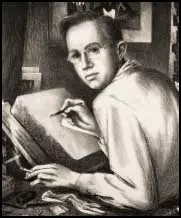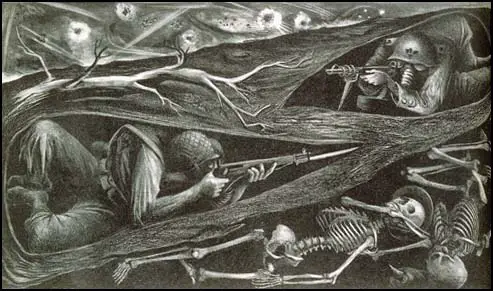Benton Spruance

Spruance had his first solo show at the Weyhe Gallery in 1933. That year he was appointed as professor of the Department of Fine Art. He also had regular exhibitions with the Print Club of Philadelphia. Spruance was seen as a "citizen-artist" by his contemporaries.
From 1934 he taught at the Philadelphia Museum School of Industrial Arts. As well as teaching printmaking he also taught the history of art. Stephen Coppel, the author of The American Scene (2008) has pointed out:: "Lithography was Spruance's principal printmaking technique. He made 536 lithographs out of a total oeuvre of 555 recorded prints; between 1928 and 1939 alone he produced some 177 lithographs. During this period his style varied from naturalistic portraits to a precisionist approach of flattened and layered forms. A deliberate socially conscious agenda informs his lithographs from 1935 to the 1940s, when he began to work in a more highly charged expressionistic style and turned to wartime subjects."

After the bombing of Pearl Harbor Spruance volunteered to join the armed forces but was turned down on the grounds of poor health. He was under no illusions as what the Second World War entailed. In 1943 he produced the lithograph, Fathers and Sons. Stephen Coppel argues: "The twisted, agonized forms in this print expresses his ambivalence. Two snipers confront each other, trapped within a swirling figure of eight that may be likened to a Mobius strip symbolizing an eternal cycle of violence. Beneath the combatants lie the skeletons of two soldiers from the previous generation who had fought in the First World War, one a German beside his spiked helmet, the other an American still wearing his tin helmet."
From the early 1950s Spruance participated in the urban regeneration of Philadelphia and in 1953 was appointed to the Philadelphia Art Commission. One of his achievements was the 1959 law where one percent of the budget for every new building in Philadelphia had to be spent upon public art. During the 1960s he produced colour lithographs, mostly literary or symbolic in theme.
Benton Murdoch Spruance died in Philadelphia on 6th December, 1967.
Primary Sources
(1) Stephen Coppel, The American Scene (2008)
Lithography was Spruance's principal printmaking technique. He made 536 lithographs out of a total oeuvre of 555 recorded prints; between 1928 and 1939 alone he produced some 177 lithographs. During this period his style varied from naturalistic portraits to a precisionist approach of flattened and layered forms. A deliberate socially conscious agenda informs his lithographs from 1935 to the 1940s, when he began to work in a more highly charged expressionistic style and turned to wartime subjects.
